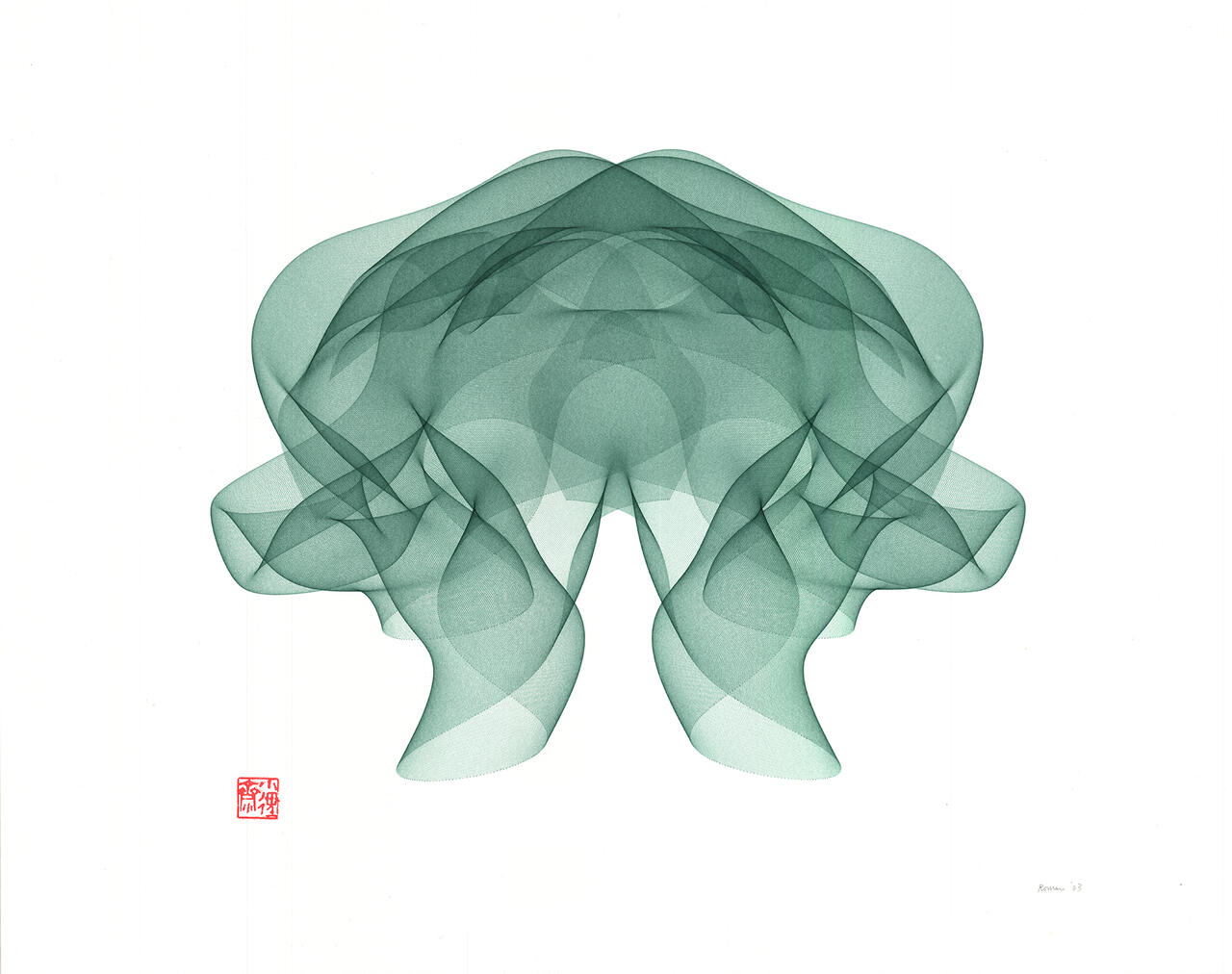
Roman Verostko (born 1929), an emeritus professor at MCAD who taught for twenty-six years and served in numerous administrative capacities, is an internationally-recognized figure in the development of generative, algorithmic art. Unlike many of his contemporaries who came from engineering and computer science backgrounds, Verostko was a Benedictine monk at Saint Vincent Archabbey and a professionally-trained painter and scholar well-versed in the history of art, philosophy, logic, and theology before he started to work with electronic and digital media in the late 1960s.
The retrospective exhibition includes over seventy original works by Verostko, encompassing his pre-algorist work, algorithmic pen and brush plotter drawings, early screen/video pieces, electronic machines, mural projects, artist books, and newer editioned prints. One of the artist’s pen plotters will be featured, as will selections from his archives of detailed notes, equations, and codes. Rather than a strict chronological retrospective, the exhibition will be organized around major themes that appear throughout Verostko’s work, such as his search for pure form, his interest in logic, his merging of eastern and western aesthetics and philosophy, and his understanding of his home “Pathway Studio" as a modern day electronic scriptorium.
A full-color, 168-page exhibition catalog will accompany the retrospective, designed by MCAD alumni Michael and Suzanne Welch of Abzorb Design. It features three essays by leading scholars Christiane Paul (professor in the School of Media Studies at The New School and adjunct curator of New Media Arts at the Whitney Museum of American Art), Grant D. Taylor (professor of Art History at Lebanon Valley College, Pennsylvania) and Bruce Wands (former director, New York Digital Salon and chair of the MFA Computer Art Department at the School of Visual Arts). While the exhibition is on view, Christiane Paul and Grant D. Taylor will participate in a panel discussion moderated by Steve Dietz (new media curator and founder, president, and co-director of Northern Lights.mn) highlighting Verostko’s significant contributions to the field of digital arts.
Verostko has received significant recognition from organizations that have supported the development of digital art, including a 1993 Honorary Mention for the Prix Ars Electronica, a 1994 Golden Plotter first prize, a 1995 Recommendatory Prize from ARTEC, and the 2009 SIGGRAPH Distinguished Artist Award for Lifetime Achievement. Over the course of his career, Verostko’s work has appeared in over a hundred exhibitions nationally and internationally, and to date, he has twenty-two published articles on subjects ranging from abstract liturgical art to algorithmic and epigenetic art. His work is in numerous public and private collections, including the Block Museum at Northwestern University in Evanston, IL; Spalding University in Louisville, KY; Minneapolis Institute of Art; Victoria and Albert (V&A) Museum in London; the Walker Art Center in Minneapolis; and ZKM Center for Art and Media in Karlsruhe, Germany.
The artist has been included in the international exhibitions and accompanying publications Genetic Art—Artificial Life (1993), CODE—The Language of Our Time (2003), The Algorithmic Revolution (2005), and V&A Patterns: Digital Pioneers (2009). In addition, he was featured in Lynn Gamwell’s Mathematics in Art: A Cultural History (2015). He also figures prominently in Grant D. Taylor’s book When the Machine Made Art: The Troubled History of Computer Art (2014) and in a related exhibition organized by Taylor, The American Algorists: Linear Sublime. His work was included in the summer 2017 Venice exhibition Algorithmic Signs, curated by Francesca Franco, and most recently in the international exhibitions Chance and Control: Art in the Age of Computers at the V&A Museum, and Coder le monde at the Centre Pompidou in Paris.
This project has been generously supported by the Carl & Marilynn Thoma Art Foundation with additional funding by David E. Moore.




















